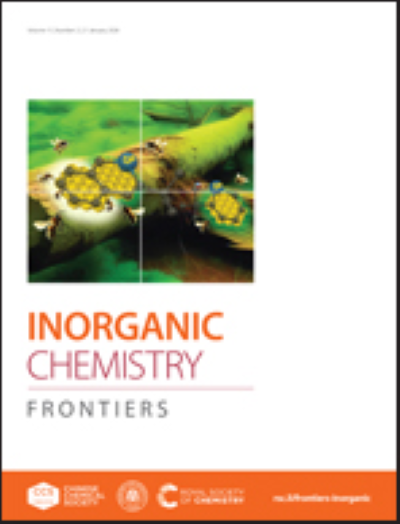累积2c-2e vs 3c-2e π-Back供主:锗烯金(I)配合物的构象偏好
IF 6.1
1区 化学
Q1 CHEMISTRY, INORGANIC & NUCLEAR
引用次数: 0
摘要
首次合成了同色和异色阳离子锗金配合物3、4和7,并对其结构进行了表征,同时发现了新型的π-背给体。这些配合物表现出不同的构象偏好(垂直或准平面),由乙烯和NHC配体的π-酸度调节。我们的键合分析进一步表明,同色络合物3表现出惊人的累积两中心-两电子(2c-2e) π-背供价,而异色络合物4和7表现出惊人的三中心-两电子(3c-2e) π-背供价。这些发现为广泛π-体系的非典型破坏以及从准平面构象到垂直构象的转变提供了一个全面的解释。本文章由计算机程序翻译,如有差异,请以英文原文为准。
Cumulative 2c-2e vs 3c-2e π-Back Donations: Conformation Preferences in Germylene Gold(I) Complexes
The first homoleptic and heteroleptic cationic germylene-gold(I) complexes 3, 4, and 7 have been synthesized and structurally characterized, accompanied by the discovery of novel types of π-back donations. These complexes exhibit distinct conformation preferences (vertical vs quasi-planar) modulated by the π-acidity of germylene and NHC ligands. Our bonding analyses further indicated that the homoleptic complex 3 exhibits marvelous cumulative two-center-two-electron (2c-2e) π-back donations, whereas the heteroleptic complexes 4 and 7 demonstrate extraordinary three-center-two-electron (3c-2e) π-back donations. These findings offer a comprehensive explanation for the atypical disruption of extensive π-systems, along with the transition from quasi-planar to vertical conformations.
求助全文
通过发布文献求助,成功后即可免费获取论文全文。
去求助
来源期刊

Inorganic Chemistry Frontiers
CHEMISTRY, INORGANIC & NUCLEAR-
CiteScore
10.40
自引率
7.10%
发文量
587
审稿时长
1.2 months
期刊介绍:
The international, high quality journal for interdisciplinary research between inorganic chemistry and related subjects
 求助内容:
求助内容: 应助结果提醒方式:
应助结果提醒方式:


